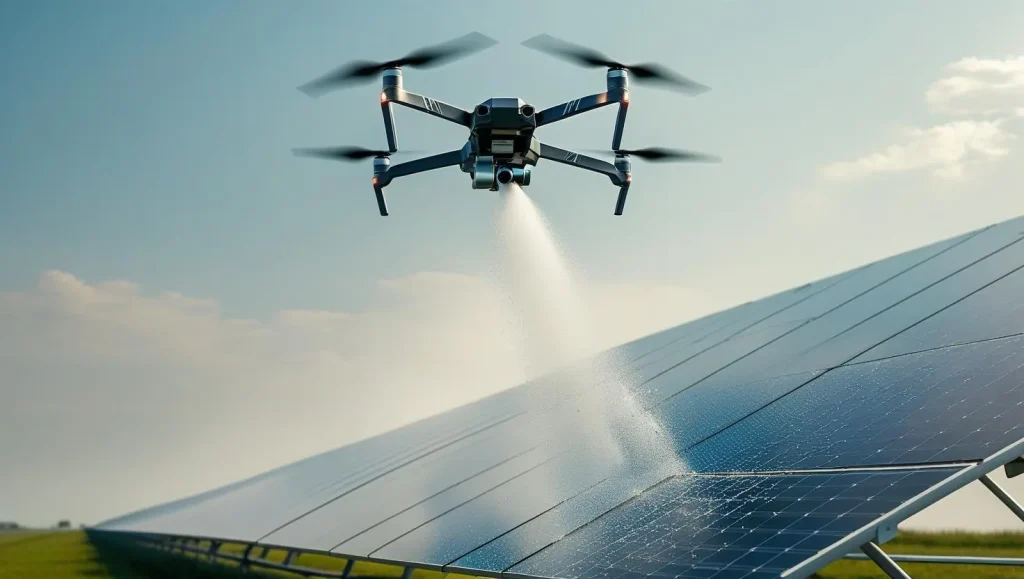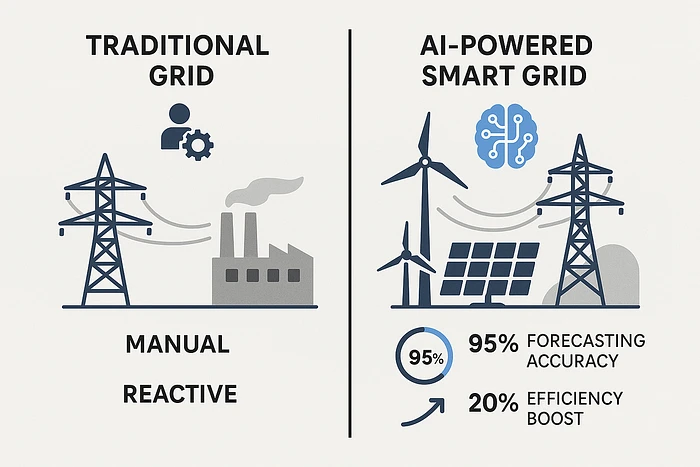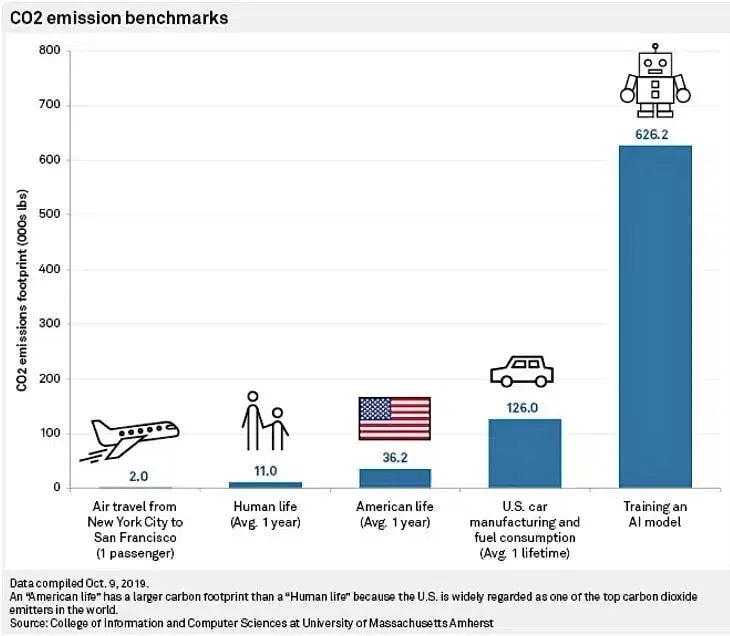Waste and energy are often treated as separate challenges, but they’re actually connected. Poor waste management leads to landfills overflowing with recoverable material. With the world generating over 2.24 billion tonnes of solid waste every year, outdated methods of waste management are inefficient.
Similarly, traditional energy systems leak heat, fall short on performance, and can’t keep up with growing demand. In both cases, valuable resources are lost, and the cost of city maintenance keeps increasing.
Thanks to recent tech advancements, AI tools can be adopted and integrated into a variety of systems related to sustainable development. From reducing food waste in kitchens to optimising energy output in waste-to-energy plants, AI can help make environmental systems more adaptive and climate-conscious.
For example, computer vision, a branch of AI that makes it possible for machines to analyse visual data like images and video clips in real time, can identify what food is thrown away. Such a system can enable commercial kitchens to reduce overproduction.

Using Computer Vision-Enabled Bins to Classify Food Waste (Source)
In this article, we will explore how AI is used in sustainable development, such as waste management and renewable energy automation. We’ll also take a look at how AI models are changing the way environmental operations are planned and executed.
Many restaurants and factories generate large amounts of waste every day, especially in cities. While some of the waste is recycled and reused, most of it isn’t. What makes this problem worse is how often reusable materials end up in landfills, simply because they weren’t sorted properly.
The majority of waste sorting is done manually. It is time-consuming and struggles to scale with the rising production of waste. That’s where computer vision for sustainability comes in.
In AI waste management systems, computer vision can be used to detect, classify, and sort waste automatically. For instance, it can help distinguish between food scraps and plastic cutlery, and route them to the correct bin for recycling, composting, or disposal.
An interesting real-world example of AI in waste management comes from Wynn Macau, a luxury resort. They serve thousands of meals every day, and food waste is a key concern. Initially, their kitchens struggled to track what was being discarded and why.
To solve this issue, they used computer vision systems with cameras and AI weighing tools. These automated systems showed, in real time, what was being thrown away. With those insights, chefs and kitchen staff made smarter, data-driven choices, buying the right amount of ingredients and cooking only what was needed. The resort was able to cut food waste by 70%, reducing its carbon footprint.

Smart Weighing Systems Help Reduce Overproduction (Source)
Despite the importance of sorting waste, it isn’t always relevant. Not all waste can be reused or recycled. Organic and non-recyclable materials often end up in landfills, where they release methane gas (which is a greenhouse gas that contributes to global warming).
They also waste space and energy that could otherwise be recovered. To address these concerns, many facilities are shifting to waste-to-energy (WTE) systems. They convert leftover waste into usable heat or electricity, offering a better alternative to traditional disposal methods.
Technologies such as anaerobic digestion, which uses microbes to break down organic waste into biogas, and gasification, which transforms waste into syngas through high heat, are at the core of waste-to-energy (WTE) systems. However, these processes are very sensitive, as any fluctuation in waste type, chemical balance, or temperature can lower efficiency or increase emissions.
Using AI is a great solution for automating waste-to-energy systems. These systems can collect data from sensors related to the type of waste coming in or the temperature of the waste. This data can then be processed using machine learning, an AI technique that learns patterns over time. Based on what it learns, the system can adjust metrics like fuel mix, pressure, or airflow in real time for maximum efficiency.
Beyond waste conversion, AI is also transforming renewable energy systems themselves, ensuring that power from sources like wind and solar is as reliable and sustainable as possible.
Renewable energy comes from natural sources like sunlight, wind, and water. It’s a cleaner alternative to fossil fuels and plays a critical role in reducing carbon emissions. But while renewable energy is sustainable, it isn’t self-sustaining. Think of it like growing a plant in your garden. It grows naturally, but it still needs sunlight, water, and maintenance to keep thriving.
For instance, wind turbines wear down, solar panels gather dust, and systems often lose energy in the form of heat if there are defects. When left without maintenance, these issues increase costs, reduce efficiency, and shorten the lifespan of energy infrastructure.
To solve this, AI tools like computer vision and predictive analytics can be used to monitor and maintain systems in real time. This makes clean energy smarter and more reliable. A key part of this reliability comes down to how equipment is monitored and maintained.
Next, let’s take a closer look at how AI improves maintenance and energy recovery and streamlines electrical grid operations.
Inspecting renewable energy infrastructure has traditionally been a manual process. Engineers would check each turbine blade or solar panel one by one, often detecting damage only after it affects the performance.
Now, these processes are being automated using AI and computer vision. Computer vision models use techniques like object detection to spot early signs of wear, such as surface cracks or dust buildup. These models are taught to identify patterns from labeled images of wear, tear, and surface cracks. Once identified, issues that need attention are flagged to alert the maintenance teams.
Using computer vision-based drones in solar farms is a great example. They can detect dirt buildup and automatically clean the panels, ensuring minimal manual effort. AI drones can also help with field inspections across industries. The data from these inspections also powers predictive maintenance systems.

An AI drone can automatically detect dust and clean solar panels
Predictive maintenance systems use AI models to forecast failures and suggest the best time for service. This approach helps prevent unexpected breakdowns and costly repairs. In fact, predictive maintenance can reduce equipment breakdowns by up to 70% and lower maintenance costs by 25%.
Another often-overlooked issue is waste heat production. Waste heat is the excess thermal energy produced by industrial systems when they’re unused or not used properly. It’s estimated that 20% to 50% of industrial energy input goes unused. Using advancements in AI, this heat can be carefully redirected for other uses, like warming buildings or water systems, without being wasted.
AI solutions can monitor temperature flows closely and dynamically redirect waste heat, turning a byproduct into a crucial energy source. They can process real-time sensor data to track temperature changes, forecast heat output, and identify when and where excess heat can be reused. A great example is the Equinix data center in Paris, which can reroute its excess heat to warm the nearby Olympic swimming pools.
After waste is managed and energy is recovered, the next challenge is distribution. Traditional electrical grids are not designed to handle the variability of renewable energy. As solar and wind adoption increases, so does the complexity of distributing power efficiently.
Modern grids collect data, then forecast energy demand using AI models. AI predicts peak demand, analyses usage patterns, and reroutes energy across the grid, preventing overloads and reducing waste.
For example, if cloud cover reduces solar output in one region, AI can shift demand to wind energy or tap into stored reserves elsewhere. This keeps the grid system stable and constant, even as weather conditions change.
Singapore offers a fascinating example of a smart grid system. The nation has integrated AI into its energy management tools. It lets them make data-driven decisions by analysing weather data, market conditions, and live consumption metrics. These tools enable smarter energy coordination, helping balance supply and demand with higher accuracy.

The Difference Between a Traditional Grid and a Smart Grid (Source)
Next, let’s walk through how sustainable AI systems can be developed sustainably. It sounds ironic, but it’s a crucial distinction.
Developing AI models takes a lot of energy. AI systems are projected to consume as much electricity as 22% of all US households every year. AI development processes like AI model training contribute to this energy use.
Training an AI model means teaching it to recognise patterns in data. This process involves running massive datasets through complex algorithms repeatedly until the model learns to make accurate decisions. The entire process requires significant computing power, which draws large amounts of energy.

Training one AI model can emit more CO2 than a car does in its entire lifetime. (Source)
However, advancements in model compression and edge AI can reduce such energy use in AI.
Model compression, which shrinks AI models to use fewer resources, can help reduce computational load without affecting performance. Meanwhile, edge AI processes data directly on local devices instead of remote servers, cutting down on energy use.
Other than using these methods, sustainability also depends on using high-quality data for model training. When models are trained with robust, well-curated data and thoughtfully designed architectures, they often require minimal retraining – saving valuable energy.
At Objectways, we provide the specialized expertise needed to source high-quality data and design models that prioritize ethical use and environmental responsibility. Our reliable data pipelines make this possible.
Here are some key benefits of applying AI to sustainability-focused sectors:
While AI offers many benefits in sustainable development, it also has some limitations. Let’s take a look at some of them:
That’s why support from experts in the field can make a difference. Our team at Objectways can close these gaps with labeled datasets, scalable infrastructure, and model designs built for efficiency.
As sustainability goals become more data-driven, the future of AI in sustainable development is set to grow in terms of both scale and impact. Hybrid energy platforms are also emerging to balance rising demands with lower emissions. Many draw inspiration from industrial sectors, where AI-led manufacturing automation is already improving efficiency and reducing waste.
Meanwhile, decentralised, low-power AI systems are opening up new possibilities in remote regions. These lightweight AI systems support local waste tracking and renewable energy.
Digital twins are also shaping the way sustainability plans are developed. These virtual replicas of systems, such as power grids or water treatment plants, use real data to test changes and predict outcomes without touching the actual machines. This means teams can experiment safely and make smarter decisions before putting changes into practice.
Smart technologies are doing the heavy lifting in AI waste management, energy systems, and sustainable development. But their actual impact lies in how thoughtfully they are designed and adopted. Building smart, scalable sustainability systems will take more than technology.
It demands a reliable metric and a strong data pipeline that AI can trust. At Objectways, we turn raw sustainability data into high-quality training datasets. From sorting waste to tracking energy, we bring domain expertise, so your AI models can deliver impactful results.
Book a call with Objectways, because a smart AI system starts with smarter data.
